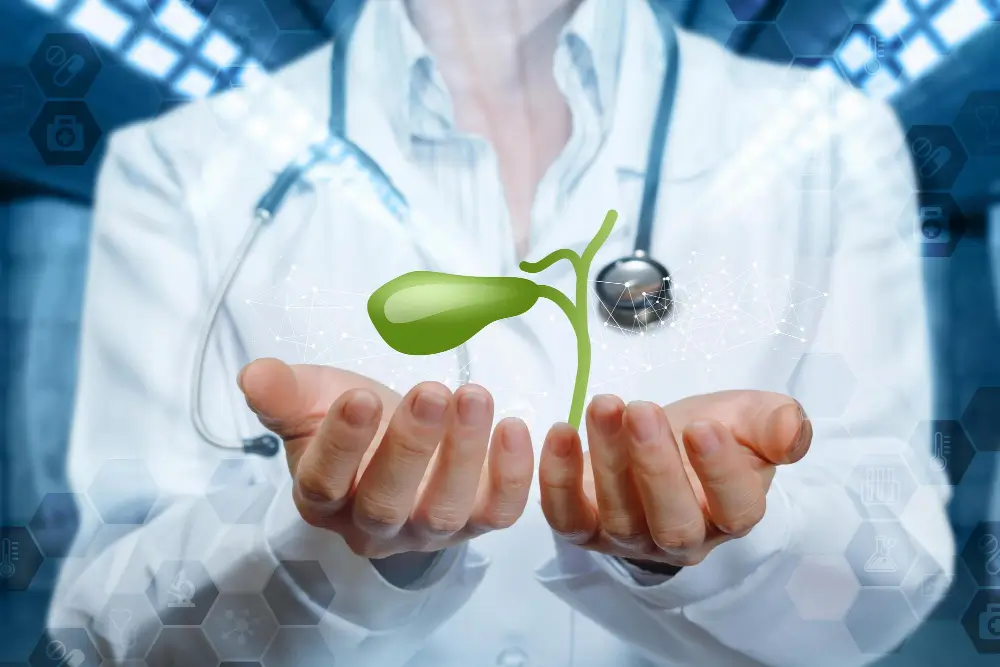
A cholecystectomy is a surgical procedure to remove the gallbladder, a small organ located beneath the liver. The gallbladder stores bile, a digestive fluid produced by the liver. This guide will provide a comprehensive overview of the reasons for cholecystectomy, the surgical process, and how to live without a gallbladder.
Why is a Cholecystectomy Performed?
Cholecystectomy is often performed to treat gallbladder-related conditions, including:
1. Gallstones
- Hardened deposits of digestive fluid that can block the bile ducts, causing pain, inflammation, or infection.
2. Cholecystitis
- Inflammation of the gallbladder, often due to gallstones.
3. Gallbladder Polyps
- Growths that could potentially become cancerous.
4. Pancreatitis
- Inflammation of the pancreas due to gallstones blocking the pancreatic duct.
Types of Cholecystectomy
1. Laparoscopic Cholecystectomy
- Procedure: Minimally invasive surgery using a laparoscope (a thin tube with a camera). Small incisions are made in the abdomen, and surgical instruments are inserted to remove the gallbladder.
- Advantages: Shorter recovery time, less pain, and minimal scarring.
2. Open Cholecystectomy
- Procedure: A larger incision is made in the abdomen to remove the gallbladder.
- When Used: Typically performed when laparoscopic surgery is not possible due to complications or previous abdominal surgeries.
Preparing for Cholecystectomy
1. Medical Evaluation
- Comprehensive health check, including blood tests, imaging tests (ultrasound, CT scan), and a review of your medical history.
2. Pre-Surgery Instructions
- Fasting: Do not eat or drink for several hours before surgery.
- Medications: Discuss with your doctor any medications you’re taking. You may need to stop certain medications before the surgery.
3. Anesthesia Consultation
- Discussion with an anesthesiologist about the type of anesthesia to be used, typically general anesthesia.
The Cholecystectomy Procedure
1. Before Surgery
- Admission to the hospital and preparation, including placement of an IV line for fluids and medications.
2. During Surgery
- Laparoscopic Cholecystectomy: Small incisions are made, and a laparoscope and surgical instruments are inserted. The gallbladder is detached and removed through one of the incisions.
- Open Cholecystectomy: A larger incision is made in the abdomen, and the gallbladder is removed directly.
3. After Surgery
- Recovery Room: Monitoring as the anesthesia wears off. You may feel groggy and experience mild pain or nausea.
- Hospital Stay: Typically, laparoscopic surgery patients go home the same day or the next day. Open surgery patients may need to stay in the hospital for a few days.
Recovery After Cholecystectomy
1. Immediate Recovery
- Pain Management: Pain medications will be prescribed. It is important to take them as directed to manage discomfort.
- Wound Care: Keep the surgical site clean and dry. Follow your doctor’s instructions for care and dressing changes.
2. Dietary Adjustments
- Initial Diet: Start with clear liquids and gradually introduce solid foods. Avoid fatty, greasy, and spicy foods initially.
- Long-Term Diet: Most people can return to a normal diet, but some may need to avoid certain foods that can cause digestive discomfort.
3. Activity and Exercise
- Rest: Get plenty of rest and avoid strenuous activities for at least a few weeks.
- Gradual Increase: Slowly increase your activity level as you feel better. Gentle walking can help improve circulation and prevent blood clots.
4. Follow-Up Care
- Doctor Appointments: Attend all scheduled follow-up visits to monitor your recovery.
- Monitoring: Watch for any signs of complications, such as infection (redness, swelling, discharge), fever, or severe pain.
Living Without a Gallbladder
1. Digestion Adjustments
- Bile Flow: Without a gallbladder, bile flows directly from the liver to the small intestine. This can lead to changes in digestion, especially after eating fatty foods.
- Common Issues: Some people experience diarrhea or bloating, particularly in the initial weeks after surgery. These symptoms usually improve over time.
2. Dietary Tips
- Small, Frequent Meals: Eating smaller, more frequent meals can help manage digestion.
- Low-Fat Diet: Limit high-fat foods to reduce digestive discomfort.
- Fiber Intake: Gradually increase fiber intake to help regulate bowel movements.
3. Long-Term Health
- Regular Check-Ups: Continue regular check-ups with your healthcare provider to monitor your overall health.
- Healthy Lifestyle: Maintain a balanced diet, exercise regularly, and manage your weight to support your digestive health.
Conclusion
Cholecystectomy is a common and generally safe procedure to treat gallbladder-related issues. By understanding the reasons for the surgery, the surgical process, and how to adjust to life without a gallbladder, you can navigate this transition with confidence. Always follow your healthcare provider’s advice and reach out with any concerns during your recovery. With proper care and adjustments, you can enjoy a healthy, active life without a gallbladder.

